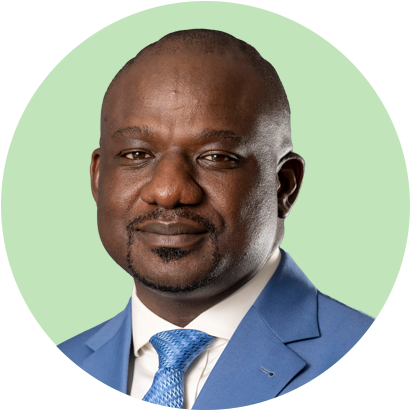Start measuring what matters most to patients.
You will be able to find all your implementation resources for our Sets of Patient-Centered Outcome Measures within each individual Set page. These include the following documents:
The manuscript is published in a peer-reviewed journal and describes the work that was done to develop the Set and discusses any key considerations and gaps in the field as well as any limitations of the work done.
The Data Dictionary is the excel file that lists all the variables that need to be collected as part of the Set, including timepoints and inclusion criteria for each variable.
The Flyer provides a visual summary – the wheel of outcomes – of the Set, and some detail regarding how each outcome is tracked, and also lists the Working Group of experts that were involved in the development of the Set.
The Reference Guide is a detailed document that describes the Set, including the outcomes, the outcome measures, the case mix variables, and the timepoints for data collection. In the appendix, a full data dictionary of all the variables is included. This provides the level of detail required to begin implementing data collection for the Set.
ICHOM's Sets have been mapped to SNOMED and LOINC, allowing you to begin collecting the relevant PROMS and clinical information immediately. In addition, our Sets are in the process of being made compatible with FIHR/HL7 Standards and some are available now.
To find out more - email info@ICHOM.org
Singapore’s Value-Driven Approach to Better Outcomes & Cost Savings in Knee Surgery
24 July 2025
10:00 BST | 11:00 CEST | 17:00 GMT +8 (Sing)
Presented By: National University Health System & NUS Yong Loo Lin School of Medicine
ICHOM Set Studied: Hip and Knee Osteoarthritis
In this free webinar, we spotlight Singapore’s National University Health System (NUHS), a regional pioneer with over a decade of success implementing Value-Based Health Care (VBHC).
Join us as we explore NUHS’s VBHC journey in total knee replacement surgery, guided by insights from the co-authors of “Value-Driven Care Methodology in Total Knee Replacement Surgery in Singapore” (NEJM Catalyst). This session will deliver practical strategies and lessons learned directly from the team that led the transformation.
You’ll gain insight into:
Please see the expert speakers below:
 |
 |
|
|---|---|---|
| A/Prof. Diarmuid Murphy FRCS (Trauma & Orthopaedic Surgery), Group Chief Value Officer, National University Health System (NUHS),Senior Consultant, Musculoskeletal Trauma Division, Department of Orthopaedic Surgery, National University Hospital (NUH) |
Ms. Shikha Kumari, Director, Value Office, National University Health System (NUHS) |
|
CIMAS Health Outcomes Measurement Journey-Diabetes Mellitus.
26 June 2025
09:00 EDT | 14:00 BST | 15:00 CEST
Presented By: CIMAS
Cimas health group started the journey to implement outcomes measurements for diabetic patients from a network of primary care clinics in 2023. The presentation will outline our journey, challenges, lessons learnt, and the results we have started seeing so far. Key learning is that outcome measurement involves continuous process improvements.
Please see the expert speakers below:
 |
 |
|
|---|---|---|
| Dr Travolta Mushayamano | Mr Foster Akaketwa | |
| Head of Clinical Services, Cimas Health Group (Pvt Ltd), Zimbabwe |
Chief Information Officer, Cimas Health Group (Pvt Ltd), Zimbabwe |
VBHC Early Adopter in an Agile Ecosystem
22 May 2025
09:00 EDT | 14:00 BST | 15:00 CEST
Presented By: Saudi German Hospital
ICHOM Set Studied:Low Back Pain, Diabetes
Join us for a FREE webinar showcasing how Saudi German Health (SGH) is transforming care delivery through the practical application of Value-Based Healthcare (VBHC). Hear directly from the leaders driving this change, as they share real-world insights from the frontlines of implementation.
What to Expect:
Please see the expert speakers below:
 |
 |
|
|---|---|---|
| Dr. Mostafa Ghalwash | Dr. Mohammed Hussein | |
| Chief Quality Officer, Saudi German Health |
Group VBHC Director, Value-Based Healthcare, Saudi German Health |
 |
|
|---|---|
| Dr. Safwat Abouhashem | |
| Professor of Neurosurgery, Saudi German Health |
Our April Webinar is hosted by Tawuniya, Saudi Arabia’s largest and leading private insurer pioneering Value-Based Health Care (VBHC).
24 April 2025
09:00 EDT | 14:00 BST | 15:00 CEST | 17.00 Riyadh time
Presented By: Tawuniya
As healthcare systems shift from fee-for-service to value-based models, payers face the challenge of integrating VBHC principles to achieve better patient outcomes and cost-effective care. Discover how trusted partnerships with providers and mutual risk-sharing agreements can deliver higher quality care while driving value-based reimbursement.
What You Will Learn:
Don’t miss this opportunity to learn from industry leaders and gain practical insights into transforming healthcare financing with VBHC.
REGISTER NOW
 |
 |
|
|---|---|---|
| Dr Othman Al-Kassabi | Dr Mohammad Al-Saeed | |
| CEO of Tawuniya | CEO of Health Sector Office |
 |
 |
|
|---|---|---|
| Dr Hadi Al-Enazy, | Dr Mohamed Kamal, | |
| Senior Executive Director of Quality, | Medical Analytics Director | |
| Governance and Transformation |
Seven Years of VBHC in Brazil: Lessons & Future Perspectives
27 March 2025
09:00 EST | 14:00 GMT | 15:00 CET | 11.00 BRASILIA
Presented By: Hospital Moinhos de Vento
Join our Knowledge Partner Hospital Moinhos de Vento (HMV), the pioneer in using the ICHOM framework to elevate patient outcomes in Brazil. Over the past seven years, HMV has implemented PROMs across nine diverse health conditions—from stroke and heart failure to cancers, orthopedic surgeries, neonatal care, and even COVID-19. Experts will share key insights on how these efforts have improved care quality, redesigned care pathways, and addressed challenges along the way.
In this webinar, you will learn:
Speakers

Mohammed Parrini,
Chief Executive Officer at Hospital Moinhos de Vento

Carisi Polanczyk,
Head of the Cardiology Service at Hospital Moinhos de Vento

Luiz Antonio Nasi
Chief Medical Officer at Hospital Moinhos de Vento

Arthur Pille
Attending Neurologist at Hospital Moinhos de Vento

Sheila Martins
Head of Neurology at Hospital Moinhos de Vento
Speakers

Zofia Das-Gupta (Moderator)
Senior Director, Outcomes Implementation & Accreditation
ICHOM

Sumalee Samakkanonthakan, RN, M.N.S. (Adult Nursing)
Manager of Center of Excellence Heart (CoE Heart)
Bangkok Hospital Pattaya
Transform your approach to cardiac surgery care by learning:
Highlights:
